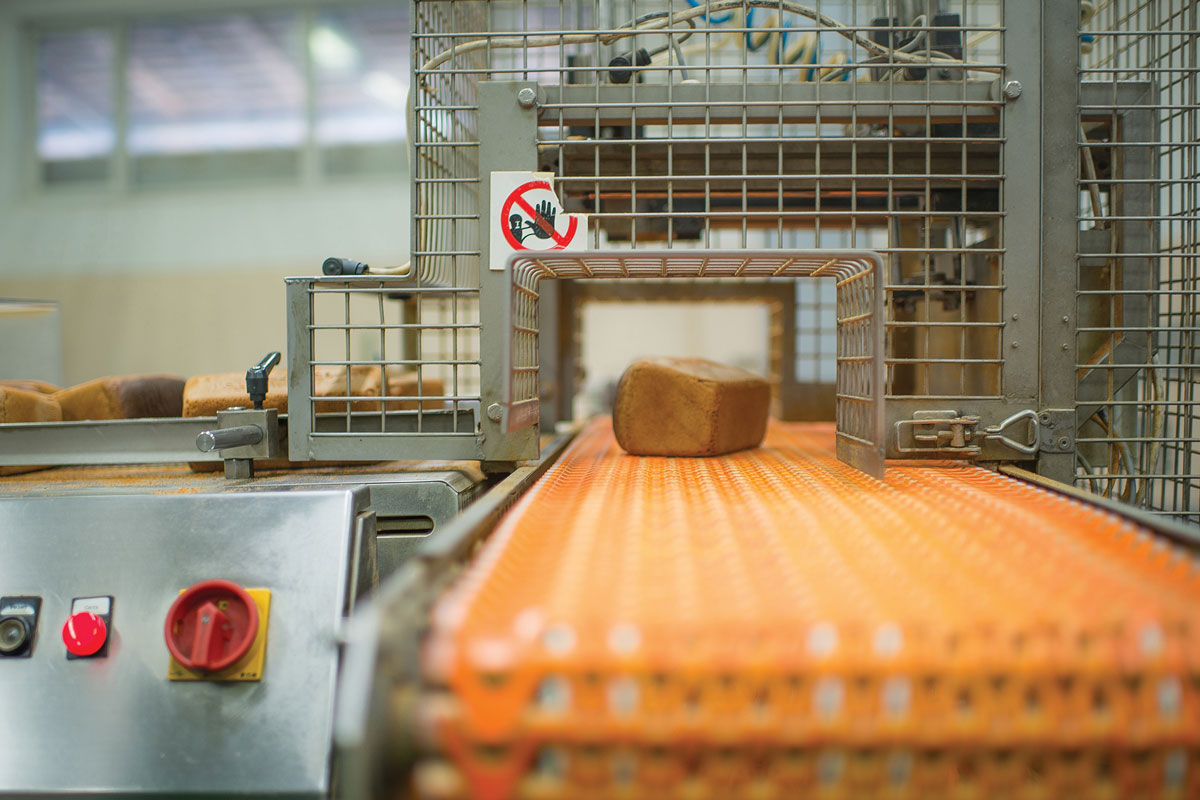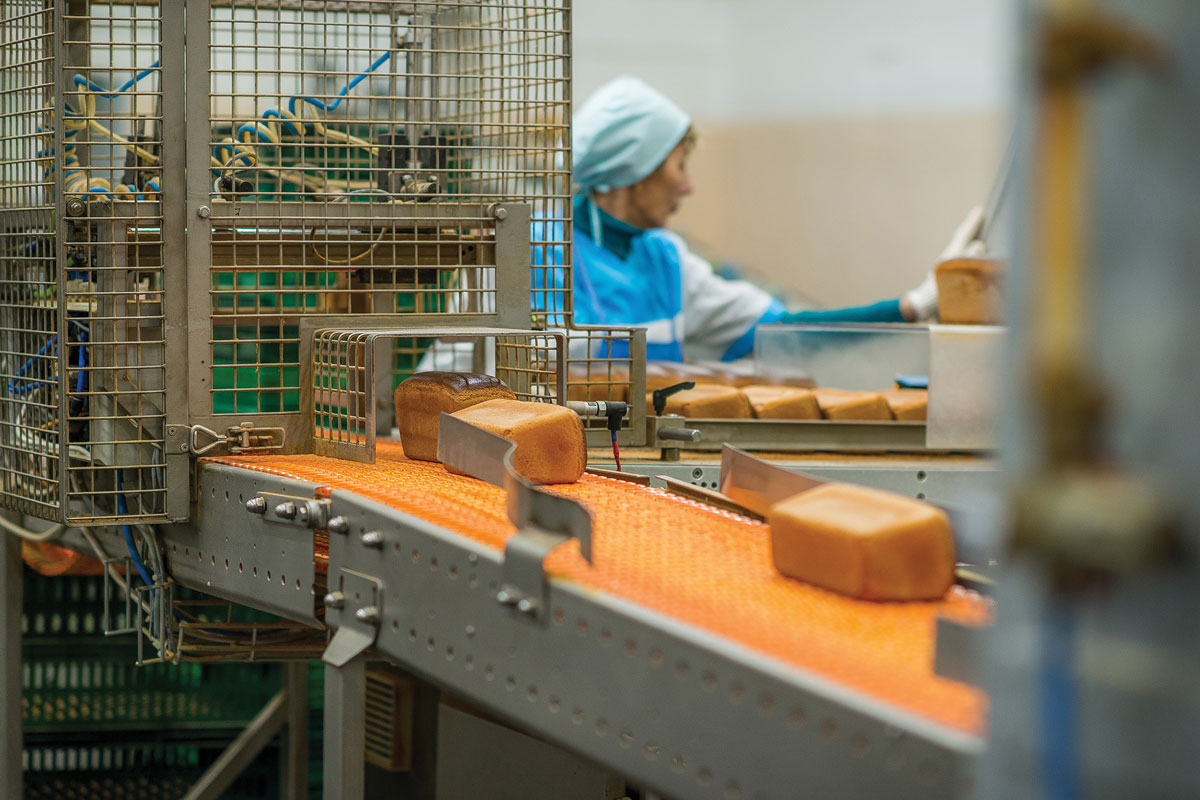So much can go wrong if employees are not careful. And it may seem impossible to make sure everyone is safe at all times. With so many hazards in the baking industry, and manufacturing in general, that may be what keeps plant managers up at night.
This fear of employee incidents can be calmed by creating a culture in which the burden of safety is spread across an organization. If this new mindset holds everyone accountable for themselves and one another, incident rates go down. Eventually, bakers can sleep soundly knowing their plants are on a path of continuous improvement and the pinnacle of safety: zero incidents.
To start, bakers must acknowledge the risks in their bakery. The Occupational Safety and Health Administration (OSHA) lists several threats, including slips and trips, work equipment, workplace transport, working at height of and in or on vehicles, working in silos and confined spaces, large objects and knives, and fire and explosions. Additional hazards to health include manual handling, upper limb disorders, occupational asthma, occupational dermatitis, noise-induced hearing loss, work-related stress and thermal stress.
With these dangers in mind, companies increasingly are creating a positive and sustainable health and safety culture to keep and attract workers in an already slim labor pool.

“Safety must be always and everywhere,” said Milton Vicenteno, vice-president of environment, health and safety, Hearthside Food Solutions, Downers Grove, Ill. “It must be gapless, as gaps in systems, policies and practices are places for safety failures.”
Achieving a zero-incident rate ultimately requires a multifaceted, all-encompassing strategy. It entails committed and informed leadership, high levels of engagement from team members and a devoted focus on safe work behavior. In bakeries, ovens, hot working environments, pinch points, fast-moving equipment, automation and robotics can all pose challenges. Attaining the highest levels of employee safety requires proactively avoiding all threats through design and well-managed best practices.
Chasing it down to zero
According to the most recent figures from the U.S. Bureau of Labor Statistics (B.L.S.), both the incident rate of total recordable cases in manufacturing and the incident rate of total recordable injury cases decreased in 2017. However, the cases resulting in days away from work (D.A.F.W.) remained unchanged from 2016 at 93 cases per 10,000 full-time employees (F.T.E.). The median of days away from work in manufacturing was eight, just one day fewer than in 2016.
D.A.F.W. can be extremely costly for bakeries that don’t have a deep pool of employees, so avoiding injuries that cause these absences is critical. According to B.L.S., the leading types of injuries in manufacturing are muscular sprains, strains and tears. These injuries caused a median number of 10 D.A.F.W. in 2017. In bread and bakery manufacturing plants, the most common D.A.F.W. injuries involve employee’s back and hands. In 2017, the B.L.S. recorded 790 back injuries and 500 hand injuries in bakeries. These are also the most common pain-points in snack food operations.
The American Bakers Association (A.B.A.) developed an award to recognize baker and allied facilities as an incentive for these companies to pursue employee safety best practices. The A.B.A. Safety Recognition Program award is based on a facility’s total case incident rate (T.C.I.R.), D.A.F.W. and days with restricted activity or transferred activity (DART) and how they compare with industry averages.
“The program recognition criteria are based on the evaluation of each participating facility’s actual safety performance and implementation of effective safety and health management systems,” said Rasma Zvaners, vice-president, regulatory and technical services, A.B.A. “If the participating member site has a T.C.I.R. and DART rate that is equal to or below the industry average, then it will be recognized as a company that has kept injuries and illnesses down and maintains a successful safety program.”
The A.B.A.’s 2018 award recipients included facilities owned by Hearthside, Aryzta, Zurich, Switzerland; D.F. Stauffer Biscuit Co., York, Pa.; Flowers Foods, Thomasville, Ga.; Mid South Baking Co., Bryan, Texas; Nation Pizza & Foods, Schaumburg, Ill.; Newly Weds Foods, Chicago; Schwebel Baking Co., Youngstown, Ohio; and The Kroger Co., Cincinnati.
This fear of employee incidents can be calmed by creating a culture in which the burden of safety is spread across an organization.
Jon Anderson, president of JRA Occupational Safety Consulting L.L.C., manages data collection for the A.B.A. Safety Recognition Program. He said the award recipients have successful safety programs with high levels of compliance with OSHA and other programs.
“They have developed and maintained safe work methods to address the hazards and risks that employees face each workday,” he said. “But most of all, the successful companies have empowered their employees to become involved in the efforts to enhance their safety programs.”
By taking basic compliance-driven safety programs and combining them with empowered leaders, the workforce can better commit and make a difference.
“These companies realize that many employees have the ability and desire to become involved and make a difference when it comes to improving safety,” Mr. Anderson said.
At Hearthside Food Solutions, empowerment stems from training. Mr. Vicenteno said training is constantly reinforced and includes policies and procedures that are followed with zero tolerance for deviation.
“Our ultimate goal is always zero employee incidents at work,” he said.
Through commitment to safety values and practices, education on how to work and live safely, and helping employees develop a sense of ownership of the safety program, Mr. Vicenteno said the company has delivered 10% reduction in employee injuries year over year.
“Hearthside, having grown from four facilities in 2009 to operating 38 locations today, has continued to deliver superior year-over-year safety improvements,” Mr. Vicenteno said. “While today at world-class levels, we continue to drive for safety improvement.”
Pursuit of continual improvement
The bakery and its leadership are responsible for continual improvement and the eventual achievement of zero incidents. Part of creating and maintaining an effective employee safety program involves staying informed on ongoing changes to OSHA standards.
One potential new standard on the horizon may focus on the danger of working in hot environments. Mr. Anderson said OSHA has sent out several reminders in recent years about the risks.
“California has implemented regulations to protect employees who work in hot weather, and it may be soon that OSHA considers similar regulations,” Mr. Anderson said.
He said that the reminders are a sign that temperature is a current focus, and bakeries could be impacted if they are not proactive.

Recently, there was a change in the “Walking and Working Surfaces” standard. Mr. Anderson said it created a lot of questions regarding reporting requirements for severe injuries. Also, many questions are often asked about what constitutes medical treatment when recording injuries and illnesses on the OSHA 300 Log. Bakers should work with third-party experts to define an employee safety program and better understand the complexities of OSHA standards. Mr. Anderson recommended relying on industry resources such as the A.B.A. for updated information and advocacy.
Ms. Zvaners said the A.B.A. Human Resources and Safety Professionals Group provides a good example of how companies can network with experts and other human resources and safety managers to learn more about these issues.
“Membership in this group also helps to stay current with trends and regulations and positive proactive safety efforts,” she said. “The members alone are valuable resources, and the ability to network with others in similar positions is very helpful when working to improve safety and health at their companies.”
Mr. Anderson added that bakery management is beginning to see the investment in safety programs paying off.
“It is easy to calculate the total cost of an injury and how that will translate into the amount of product that must be produced and sold in order to recover the cost of the injury,” he said. “When preventative and proactive programs and efforts are implemented and injuries go down, the cost of these safety efforts becomes an investment and not an expense.”
By focusing on making the workplace safer, bakers enhance the profitability of the business. By chasing zero-incident rates, companies can find that the net investment has zero negative impact on the bottom line.
This article is an excerpt from the September 2019 issue of Baking & Snack. To read the entire feature on employee safety, click here.




